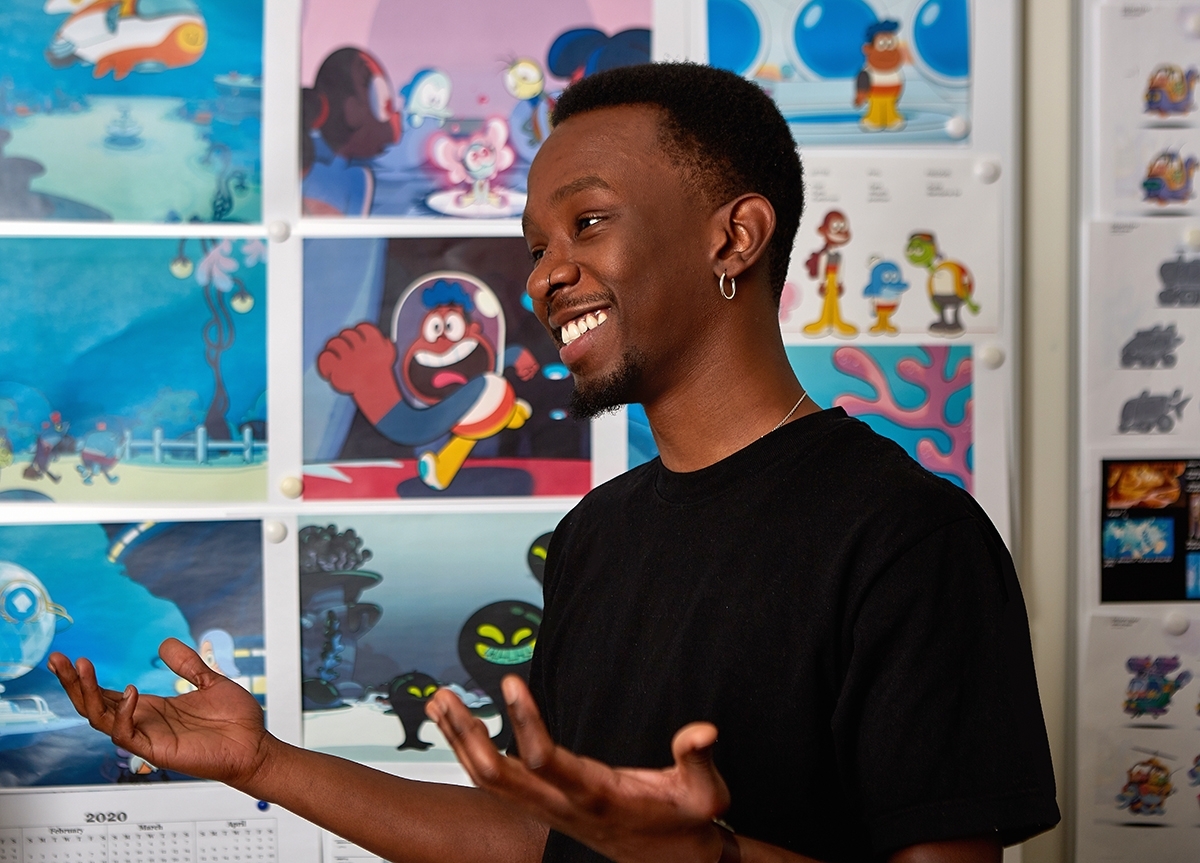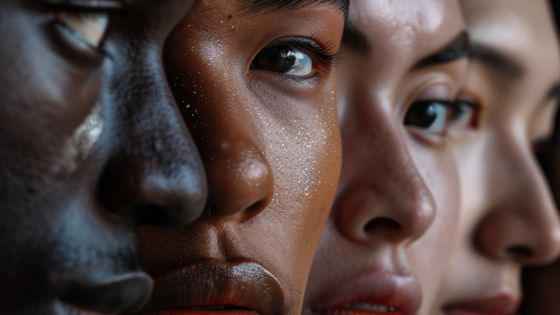on
BY SIMONE J. SMITH
“OMG! You have to draw me Gyimah!”
He started laughing. “Of course Simone! Say less. I actually enjoy drawing people. I have been doing it my whole life.”
It was my first interview of the day, and I had the honour and privilege of interviewing a renowned talent, a young man who has only just begun his rise as a creative; the one and only Gyimah Gariba.
Named one of “15 Young African Creatives Rebranding Africa” by Forbes, Gyimah is breaking barriers as one of the few Black children’s animators in Canada. He has designed covers for Marvel Comics and also has an extensive online following because of his distinct illustrative style. Not to mention, he is also redefining what the next generation of climate change activists look like.
Kids, especially Black Canadian children, are in for a special treat. As more Canadians are joining the fight against climate change, one new kids series will help children and their families understand climate change and teach them about the importance of taking care of our planet and each other. Yep! You got it, our very own Gyimah Gariba has taken his creative genius to the next level. Titled Big Blue, the animated sci-fi comedy will make its world premiere on CBC (TV and CBC Gem) beginning December 4th, 2021.
Big Blue is an imaginative series that follows sibling underwater adventurers Lettie and Lemo (inspired by Gyimah’s own siblings) who lead a quirky submarine crew with a magical ocean fairy stowaway named Bacon Berry. Together, they just might unravel the mysterious secrets of their underwater universe. The series drops young viewers deep into a wacky world of comic adventure, while helping to redefine what a family means and how caring for one another is the most important thing of all.
Young Black viewers watching Big Blue will now be able to see themselves represented not only because the siblings are both Black, but also because they learn the importance of protecting the environment. Greater representation of a diversity of voices in this space is crucial if we are to make a real lasting impact for all communities. In addition, Grammy-winning music producer Timbaland and his Beatclub team produced the series’ theme song.
I wanted to hear all about it, and Gyimah happily shared his story with me.
“My older brother and older sister were into comic books, and they were always drawing. They always seemed to be having a good time, and naturally as the baby brother, I wanted to do everything my older siblings were doing. They finally let me hang out with them, and when they grew out of it, I enjoyed it so much that I kept doing it. They would tell me that they were going out, and I would be like I am staying here to read comics, and draw.”
Gyimah’s dad was into architecture, but went into political science, and his mom is a mathematician. They are both big supporters of the arts, which is why when Gyimah decided he wanted to go down this creative path they never seemed worried. “They told me that I had to be serious about it. If they were going to pay $200.00 for markers, they better see you drawing. My mom was like; ‘You better draw me from flowers.’ I drew her the flowers.”
Gyimah tells me about the first person outside of his family who saw his talent, an art teacher named Michele GbaGba.
“He was the first person to let me know that there was a career for me in the art world if I was serious about it. It was around that time that I kept getting asked, ‘Can you draw me,’ I mean all the time. I love to help people imagine themselves out of the physical context. It became my party trick. Mr. GbaGba helped steer me in the right direction. Before I even noticed, he turned my head to where I could take this. ‘This could be for you!’ I became an artist for hire.
Gyimah began to invent characters, and began his first internship in LA at Titmouse. I was excited when he told me that he actually got to work on the Black Dynamite cartoon series. “LeSean Thomas, he gave me my first paycheck. It blew my mind. I remember calling home to announce that I was actually getting paid.” He chuckled. “I could feed myself.
He then shared with me how and why he became involved with this project.
“Guru studio had a call for pictures. I was thinking about the world, there was a lot going on. It was very intense, and overwhelming. As a family, we began talking about our childhood. My sister just had children, and I thought about characters that would represent my niece and nephew. If I were a kid, it would be great if I could see myself in the characters.
I thought it would be great to be able to create characters for Black children. It would be a fun cartoon, a world of silly jokes; something light and enjoyable with Black characters. The characters are based on my brother and sister. They have become everyone’s version of their older brothers and sisters.
When I asked them initially, they were like, who cares. Now they want royalties,” he says laughing. “They told me that if a check didn’t come every time they heard their names, they were coming for me. I love them a lot, and this show is my love letter to my brother and sister.”
To wrap up our interview, I wanted to know what he most enjoyed about the project, and if he had any advice for young creatives.
“I have finally gotten into the rhythm of creating. It is hard because I am a bit of a perfectionist. The crew I am working with is dedicated to being silly, and being serious. It has made the experience light. Even if it is not perfect, if it makes you laugh, we can move on.
What it’s about Simone is being able to talk to kids about large concepts without getting lost in it. The things that were kept from me, had to do with me. I should have been involved in these dialogues. Taking away the scariness of certain situations is important.
I want kids to know that it starts with you. If you play ball everyday, make sure the court is clear and harmonious. There are no episodes where the characters are cruel to each other. They are never in a situation where they are vindictive to each other. You can be flawed and still be caring. There is a lot of pressure put on us, and we have to just demystify what is happening in the world. It can be as simple as just loving your family. Take that energy and spread it.”
Stay in the loop with exclusive news, stories, and insights—delivered straight to your inbox. No fluff, just real content that matters. Sign up today!
We, as humans are guaranteed certain things in life: stressors, taxes, bills and death are the first thoughts that pop to mind. It is not uncommon that many people find a hard time dealing with these daily life stressors, and at times will find themselves losing control over their lives. Simone Jennifer Smith’s great passion is using the gifts that have been given to her, to help educate her clients on how to live meaningful lives. The Hear to Help Team consists of powerfully motivated individuals, who like Simone, see that there is a need in this world; a need for real connection. As the founder and Director of Hear 2 Help, Simone leads a team that goes out into the community day to day, servicing families with their educational, legal and mental health needs.Her dedication shows in her Toronto Caribbean newspaper articles, and in her role as a host on the TCN TV Network.












